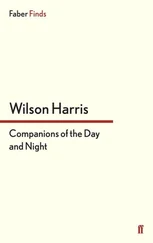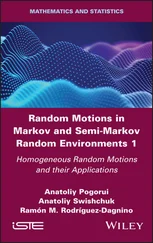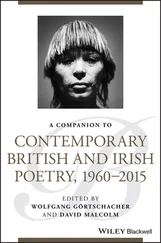A Companion to Motion Pictures and Public Value
Здесь есть возможность читать онлайн «A Companion to Motion Pictures and Public Value» — ознакомительный отрывок электронной книги совершенно бесплатно, а после прочтения отрывка купить полную версию. В некоторых случаях можно слушать аудио, скачать через торрент в формате fb2 и присутствует краткое содержание. Жанр: unrecognised, на английском языке. Описание произведения, (предисловие) а так же отзывы посетителей доступны на портале библиотеки ЛибКат.
- Название:A Companion to Motion Pictures and Public Value
- Автор:
- Жанр:
- Год:неизвестен
- ISBN:нет данных
- Рейтинг книги:3 / 5. Голосов: 1
-
Избранное:Добавить в избранное
- Отзывы:
-
Ваша оценка:
- 60
- 1
- 2
- 3
- 4
- 5
A Companion to Motion Pictures and Public Value: краткое содержание, описание и аннотация
Предлагаем к чтению аннотацию, описание, краткое содержание или предисловие (зависит от того, что написал сам автор книги «A Companion to Motion Pictures and Public Value»). Если вы не нашли необходимую информацию о книге — напишите в комментариях, мы постараемся отыскать её.
A Companion to Motion Pictures and Public Value
Companion
A Companion to Motion Pictures and Public Value
A Companion to Motion Pictures and Public Value — читать онлайн ознакомительный отрывок
Ниже представлен текст книги, разбитый по страницам. Система сохранения места последней прочитанной страницы, позволяет с удобством читать онлайн бесплатно книгу «A Companion to Motion Pictures and Public Value», без необходимости каждый раз заново искать на чём Вы остановились. Поставьте закладку, и сможете в любой момент перейти на страницу, на которой закончили чтение.
Интервал:
Закладка:
In films such as Anxiety (1962) and The Strike (1964), Khachikian continued to represent the modern urban lives of the elite Tehrani society, as well as the middle-class and working-class. His camera projects an honest and realistic view of human nature, zooming into the darker depths of our psyche, so to speak; at times exaggerated for theatrical purposes. His contribution to the public aesthetic values of Iranian cinema was creating the distinctive genre of Tehran Noir, where tradition and modernity, as well as mainstream and marginal cultures cohabit one narrative space. He mastered horror film sensibilities within a quintessential Iranian cinema, introduced female agency, and made the idea of happy endings not too far-fetched in Iranian stories. This last element, i.e., the happy ending, is a missing element in the “more serious” art-house cinema that followed Khachikian’s stylistics. Film critics of the time did not take his entertaining cinema seriously, but an overall analysis of Khachikian’s portfolio affirms that he was the first Iranian auteur, an auteur who understood cinematic form and genre. The generic stylistics that he employed were already defined by American and European cinemas, yet he put his signature on his distinctive Noir by infusing elements of Iranian folkloric stories into his narrative. He displayed the cultural contradictions of Iranian society. Khachikian was a script writer, editor, music composer, a master of visual and sound editing, and a director who would attend shootings with a pre-arranged decoupage. He was an auteur who did not pursue intellectual art-house aspirations. Instead, he successfully made well-written and well-structured genre films for the masses. His Tehran Noir stylistics were refined in the films that he made in the 1960s. He introduced several young talents to cinema and made them stars, such as: Malek Motiei, Vida Ghahremani, Fardin, Arman, Faranak Mirghahari, Jamshid Hashempour, Jalal Pishvaian, and Reza Rooygari. His films fortified the stardom system in Iranian cinema, but his name alone was enough reason for filmgoers to go to his latest film.
The genre of Tehran Noir lost its appeal to an emerging dance and action film aesthetic that did not attend to fine cinematic techniques. B-Grade filmfarsi movies conquered the box-office in the mid to late 1960s. Watching filmfarsi movies that encompassed genres such as Jaheli/ Tough Guy Movies, comedies, and Abgushti/ Meat Stew Movies continued to be Iranian cinema’s escapist formula. They are for local box office consumption, not meant to be showcased in any national or international film festivals.
Both the form-oriented, auteur-based thrillers of Khachikian, and the formless filmfarsis of the 1960s were common in their lack of interest in politics. Iranians experienced failure in nationalizing oil, the fall of the democratically elected government of Dr. Mossadegh, and an American-led coup d’etat in 1953. A democratic era in Iranian politics ended in 1953, followed by a period of authoritarian governance. Under these conditions, movies were primarily focused on entertaining mass audiences until late 1960s.
Filmfarsi sensibilities are still alive in Iranian cinema. Censors of the Ministry of Culture and Islamic Guidance/ Ershad Eslami take it easier with B-Grade movies, especially with light comedies. As a result, the genre of comedy has provided a safe venue to showcase mild social criticism. Many auteurs have also made filmfarsi movies. Either they needed the capital in order to make their next art-house film, or they thought that reaching out to average filmgoers to carry a serious message is more feasible by using the more entertaining filmfarsi sensibilities. Mani Haghighi, a filmmaker who has made art-house films as Men at Work (2006) and Canaan (2007), also made a light comedy, 50 Kilos of Sour Cherries (2016), in order to make money for his next film project. Tahmineh Milani who made her internationally acclaimed Fereshteh Trilogy between 1998 and 2003 ( Two Women , 1999, The Hidden Half , 2001, and The Fifth Reaction , 2003), made a light comedy sequel, Ceasefire I (2006) and Ceasefire II (2014) to criticize serious gender issues in Iran’s patriarchal system. Ceasefire I also managed to depict the stigma around the LGBT community in Iran by using a comic tone. It was one of the best-selling films in the history of Iranian cinema. Although Ceasefire movies employed filmfarsi sensibilities, Milani’s masterful writing and cinematic technique enhanced the narrative and technical quality of her movies.
The Evolution of Public Aesthetic and Artistic Values: Metaphorical Language in “New Wave” Films and “Poetic Cinema”
In a political climate with limited individual and social freedom, cinema in the late 1960s and onward became a vehicle to express ideas and opinions. Inspired by the “committed literature” and Persian “New Poetry,” Iranian New Wave cinema was born in response to the tyrannical dominance of the Pahlavi regime in the social scene, and also in response to filmfarsi sensibilities in cinema. Khachikian’s legacy, even if unacknowledged, is evident in the New Wave cinema. New Wave cinema was quintessentially auteuristic with a meticulous attention to form. Films such as Downpour (1972, dir. Bahram Bayzai), Deer (1974, dir. Masud Kimiai), and Secrets of the Treasure of the Jinni Valley (1974, dir. Ebrahim Golestan) had sociopolitical concerns, but they did not attract mass audiences. To evade censorship, the language that New Wave directors chose was a metaphorical language. (The metaphorical language of New Wave cinema was also employed in the poetic cinema that was formed in the post-revolutionary era.)
In 1979, a massive revolution transformed Iran’s cultural, socio-political, legal, and educational infrastructures. The revolution abruptly changed the cinematic conventions, upon which there had been a common understanding among filmmakers, producers, studio owners, and governmental agents who facilitated film productions and/or oversaw the national film industry. The accepted directorial and performing conventions of Iranian cinema were criticized, questioned, and subdued by the new regime to meet the new Islamized standards. The new regulations were meant to normalize and assert the militant, political Islam in the sociocultural domain.
In the new mode of Islamized cinema, unveiled women could not be screened, even if the female character was to be shown in her bedroom. Sufficient distance had to be preserved among male and female actors, even if they were playing in a romantic sequence, or were married couples in real life. Male makeup artists were not allowed to do the makeup for actresses. Erotic scenes had to be withdrawn. Instead, romance and sensual moments between characters were to be “implied” by alternative and creative ways. Before 1979, music and dance numbers had been integral parts of many Iranian movies. In less than a few weeks after the revolution and the establishing of the Islamic regime, music and dancing were considered emblems of the western “decadent” lifestyle; hence they were forbidden to be screened in theater houses. Popular superstars and renowned filmmakers either left the country or were prohibited to take part in the national cinema. In short, the Iranian film industry, both in the mainstream commercial sector and the art-house sector, was threatened with extinction right after its most prosperous period in the late 1970s (see Naficy 2012).
The political revolution subsequently expanded to be a substantial cultural and social makeover. In early part of 1980, new film institutions such as Farabi Film Foundation, Sima Film (under the auspices of the National Television, renamed as the Islamic Republic of Iran Broadcasting [IRIB]), and The Arts Centre of the Islamic Propaganda Organization ( Hozeh Honari Tablighat Eslami ) were established to train young “committed and revolutionary” filmmakers. Such establishments were also investing in the production of Islamized and revolutionary films. When the Iran-Iraq war broke out in 1980, the government started making propagandist war movies under the canopy of the “Holy Defense Cinema.” The Iranian film community did not, however, wish to succumb completely to the Islamized model of cinema. In fact, Iranian cinema maintained high standards of cinematic production, against all odds. The national cinema took a direction that was not initially predicted by the Islamic government. At home, local productions dominated the national market with art-house films and commercial mainstream movies, mainly because American movies could not be shown in theaters. The foreign movies, i.e., non-American, that were screened were also limited to revolutionary films such as Battle of Algiers (1966, dir. Gillo Pontecorvo).
Читать дальшеИнтервал:
Закладка:
Похожие книги на «A Companion to Motion Pictures and Public Value»
Представляем Вашему вниманию похожие книги на «A Companion to Motion Pictures and Public Value» списком для выбора. Мы отобрали схожую по названию и смыслу литературу в надежде предоставить читателям больше вариантов отыскать новые, интересные, ещё непрочитанные произведения.
Обсуждение, отзывы о книге «A Companion to Motion Pictures and Public Value» и просто собственные мнения читателей. Оставьте ваши комментарии, напишите, что Вы думаете о произведении, его смысле или главных героях. Укажите что конкретно понравилось, а что нет, и почему Вы так считаете.












